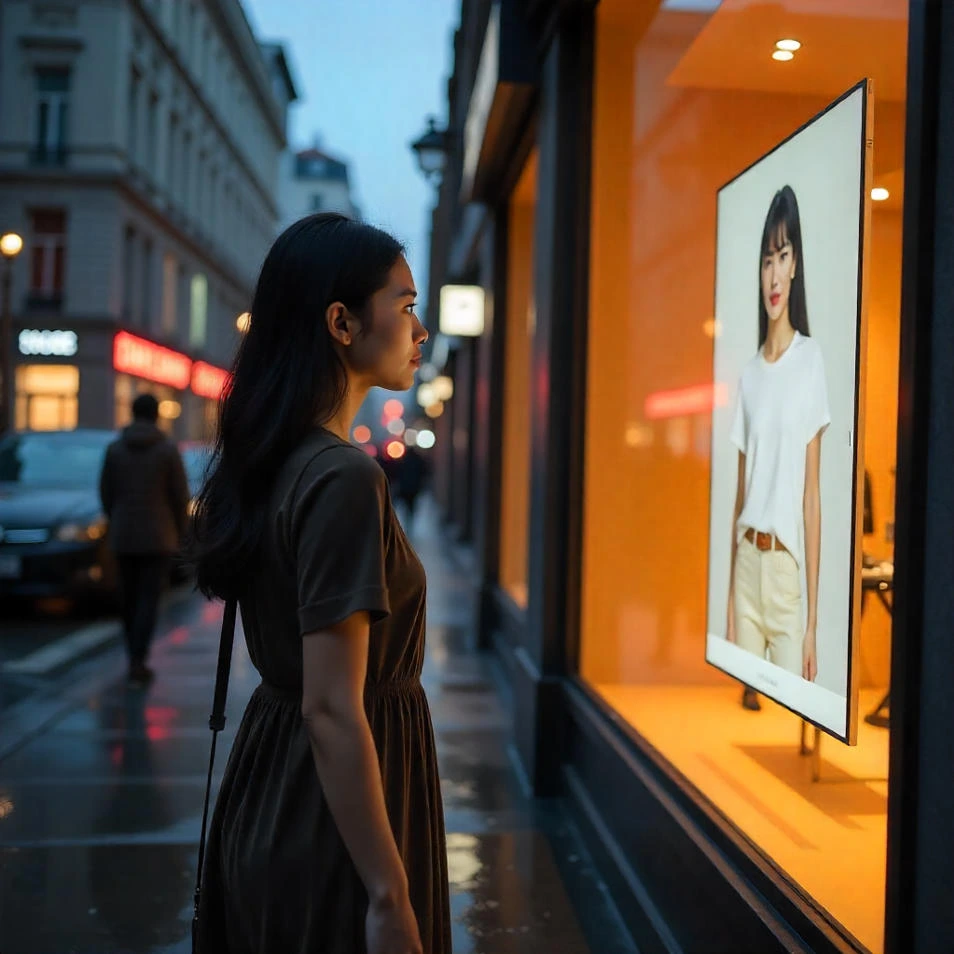Digital ads feel so personal for every one
Ever ponder why the advertisements on your laptop or phone seem to read your thoughts? You’re considering purchasing sneakers one minute, and then all of a sudden ,there are advertisements for them everywhere. It’s not magic. It combines data, psychology, and intelligent technology to better understand you than you may think.

It’s All About You— In a literal sense
These days, digital advertisements are made for you, not just “people
” Tiny digital traces are left by your online activities, including what you click on, what you search for, how long you spend on a page, and even the things you don’t interact with. All of that is used by advertisers to create a profile and present content that seems highly relevant.
Therefore, it’s not a coincidence when that new device or cozy hoodie appears in your feed; rather, it’s a sign of personalization.
Your brain prefers familiar things.
The problem is that your brain is attracted to things it can relate to or recognize. Advertisers employ psychologically supported tactics, such as displaying similar-looking individuals, speaking in relatable terms, or reminding you of recent searches. Because of this, digital advertisements frequently seem to understand you. They are, in a sense.
Emotional Bonding = Confidence
The best products aren’t always purchased. They frequently purchase the one with whom they identify the most. For this reason, emotional triggers like happiness, nostalgia, and FOMO are used in personalized advertisements to establish familiarity and trust. Telling a story that works for your world is more important than trying to sell.
Human psychology combined with smart technology
Algorithms and artificial intelligence are continuously learning from our online activities. Digital advertisements that seem to know you—your needs, moods, and even your timing—are the result of combining that with a thorough understanding of human psychology.

Ads Know A Lot About You Thanks to Micro-Targeting
Your search history is not all that marketers use. Additionally, they examine:
- Then, short, straightforward advertisements are more effective
- The weather and where you are (During a rainy week, you may see advertisements for umbrellas.)
- Your habits at different times of the day Are you a late-night shopper? Ads appear appropriately.)
- Your use of apps (financial, entertainment, and fitness apps all indicate interests)
- Together, these seemingly innocuous bits of data create a highly detailed representation of “you,” enabling highly customized advertising experiences
The Development of Predictive Advertising: Advertising That Looks Ahead
Instead of just reacting to your previous behavior, digital ads now predict your possible next move.
You’ve been watching workout videos in the evenings. You see ads for protein shakes the next morning.
You’ve started reading about weekend getaways. There are advertisements for local experiences, travel, and accommodation.
You spent more time scrolling than usual → Advertisements for sentimental or comfort-oriented products may appear late at night
Concluding Thoughts: Individual, Not Perfect
Digital advertisements are becoming more intelligent. You still have power, though, at the end of the day.
You could:
- Decide how much to divulge.
- Choose what you want to click.
- Find out how your data is utilized.
- Encourage companies that prioritize ethical customization.
- Personalization becomes an effective tool for users as well as marketers when it is used to improve the user experience.
Bonus Advice: The Perils of Customization
- Sometimes being too personal can hurt your brand.
- Showing weight-loss ads to someone who has recently sought mental health support, for example? That could be interpreted as being careless.
- Is a previously purchased item being retargeted? You might find that annoying.
- using names or emails in the copy of the advertisement without permission? That might sound unnerving.
It’s now a prediction instead oA Brief Retrospection: How Smart Ads Got
Let’s go back in time.
Ads were basic in the early 2000s. When you visit a website, the banner that appears is usually irrelevant. Facebook targeting, Google Ads, and ultimately AI and machine learning followed.
What was different?
- Cookies began to monitor user activity.
- Social media provided information about hobbies, interests, and relationship status.
- Location, app usage, and screen time were added by mobile apps.
- Smartphones evolved into portable behavior monitors.
- And now… AI does real-time analysis on everything.f a guess.
When It Seems Like Marketing Is Mind Reading (But Isn’t) Let’s start with the obvious:
“It’s unsettling that the internet knows what I want before I do.”
But in actuality, it isn’t magic. Data, psychology, and timing all play a part.
When you
- Go through a specific type of post.
- Pause at a specific video.
- Don’t buy anything after clicking on a link.
- Share a meme or save a reel.
- Emotional crumbs are being left behind. In response, marketers use digital platforms and behavioral science. That’s where the “mind reading” illusion begins.
Conclusion: Customization Is a Mirror
- In the end, digital advertisements feel intimate since they capture your preferences, interests, and habits.
- The internet’s way of saying, “I see you,” is through advertisements.
- The way they put it is the intersection of ethics, design, and psychology.
- Therefore, whether you’re a brand developing a campaign for tomorrow or someone browsing at midnight…
- Keep in mind that advertisements can be courteous while still being personal.
- And they can even be somewhat lovely when done correctly.
Which Resources Are Used for Ad Personalization?
Let’s examine the technology stack that underpins personalization in more detail:
Meta Pixel: Tracks internet activity and connects it to Instagram and Facebook
Google Ads Manager uses browsing and search data to target intent.
Programmatic Advertising: millisecond ad buying powered by AI
For targeted advertising campaigns, data management platforms, or DMPs, collect and organize user data.
First-party data from various touchpoints is compiled by customer data platforms, or CDPs.
Use scroll maps and heatmaps to display the areas where users click and hover, even when they are not clicking.
This is highly engineered and not random.
In conclusion, it’s strategic marketing rather than magic.
Since digital advertisements are meant to arouse emotions rather than deceive, they feel intimate. Every advert
isement is the outcome of your decisions, deeds, and a tiny bit of psychology. Advertisers only take in what you’ve already shown them; they don’t see inside your head.
This can occasionally feel beneficial, like a gentle reminder or prod. At other times, it might seem overwhelming or intrusive. As a consequence, awareness is essential. You regain control after you comprehend how digital personalization operates